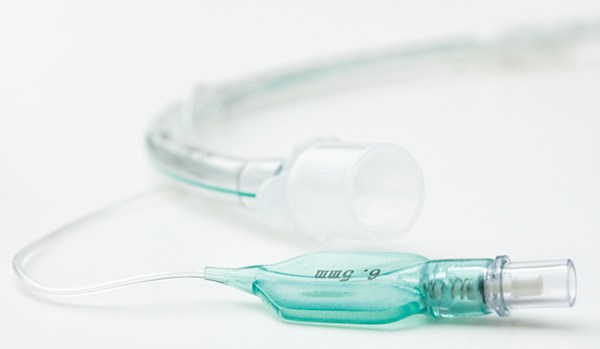You are working a busy shift in the emergency department when you answer the EMS radio: “10-month-old, active compressions, GCS 3, be there in 2!” As you whip out the Broselow tape and get the trauma bay set up, you turn to the airway cart. Cuffed vs. uncuffed”¦ does the choice between endotracheal tubes (ETT) make your head spin?
Why All the Fuss?
The old adage is that kids are not just little adults. One notable anatomic difference is that the cricoid cartilage is the narrowest part of the airway, as opposed to the glottis in adults.1 For many years, this information translated into the recommendation to use uncuffed tubes for patients younger than 8 years old.2 It was feared that cuffed ETTs would injure the subglottic tissue, leading to tracheal damage, mucosal ischemia, and complications such as post-extubation stridor or tracheal stenosis.3 Another assumed benefit of uncuffed ETTs was maximizing airway diameter in the already tiny pediatric airway, which would improve ventilation and the ability to suction secretions.4
What Made Us Change the Tune?
A lot of the cuffed vs. uncuffed “urban legends” are rooted in a time when specialized airway equipment simply did not exist for the pediatric population. Many doctors used the formula [(Age/4) + 4] to estimate the correct uncuffed ETT size.5 However, it has been shown that up to 30% of intubations with uncuffed ETTs need reintubation for size adjustment, as not all children fit the standard formula.4,6 Thankfully, we now have an array of pediatric specific cuffed ETTs that have high-volume, low-pressure seals to help combat this anatomic variation and minimize ETT exchanges.4
Furthermore, a lot of data now support the use of cuffed ETTs in the pediatric population. There appears to be no difference in tracheal injury between cuffed and uncuffed tubes.7,8 Cuffed ETTs can optimize oxygenation and ventilation by diminishing by air leak, which can help in patients with poor compliance or high resistance.9 Newth et al. looked at rates of post-extubation stridor and found no difference between cuffed and uncuffed ETTs, even in the subgroup of prolonged intubation (>21 days). Further, data showed improved end tidal gas monitoring and decreased rates of pneumonia with cuffed ETTs.2
What's the Recommendation?
The American Heart Association updated their pediatric guidelines in 2010, stating that it is OK to use both uncuffed and cuffed tubes in infants and children.3,9 Cuffed ETTs seem to be the preferred choice by pediatric emergency medicine physicians for many reasons: pediatric specific designs, improved ventilation, minimal airway trauma, and decreased need for ETT exchange.1 When faced with an ETT dilemma in the emergency department, “to cuff” seems to be the answer.
References
- Harless J, Ramaiah R, Bhananker SM. Pediatric airway management. Int J Crit Illn Inj Sci. 2014;4(1):65-70.
- Newth CJ, et al. The use of cuffed versus uncuffed endotracheal tubes in pediatric intensive care. J Pediatr. 2004;144(3):333-337.
- Fox S. Cuffed Endotracheal Tubes in Children. Pediatric EM Morsels. 2013. http://pedemmorsels.com/cuffed-endotracheal-tubes-in-children/.
- Taylor C, Subaiya L, Corsino D. Pediatric cuffed endotracheal tubes: an evolution of care. Ochsner J. 2011;11(1):52-56.
- Luten RC, et al. Length-based endotracheal tube and emergency equipment in pediatrics. Ann Emerg Med. 1992;21(8):900-904.
- Khine HH, et al. Comparison of cuffed and uncuffed endotracheal tubes in young children during general anesthesia. Anesthesiology. 1997;86(3):627-631; discussion 27A.
- Weiss M, et al. Prospective randomized controlled multi-centre trial of cuffed or uncuffed endotracheal tubes in small children. Br J Anaesth. 2009;103(6):867-873.
- Deakers TW, et al. Cuffed endotracheal tubes in pediatric intensive care. J Pediatr. 1994;125(1):57-62.
- Neumar RW, et al. Part 1: Executive Summary: 2015 American Heart Association Guidelines Update for Cardiopulmonary Resuscitation and Emergency Cardiovascular Care. Circulation. 2015;132(18 Suppl 2):S315-67.



